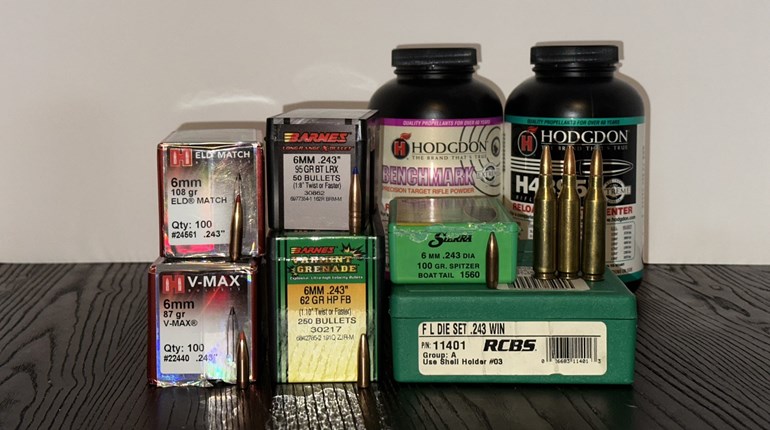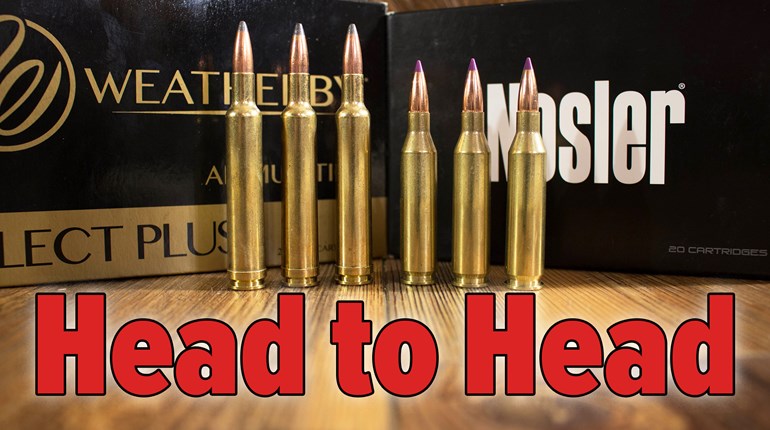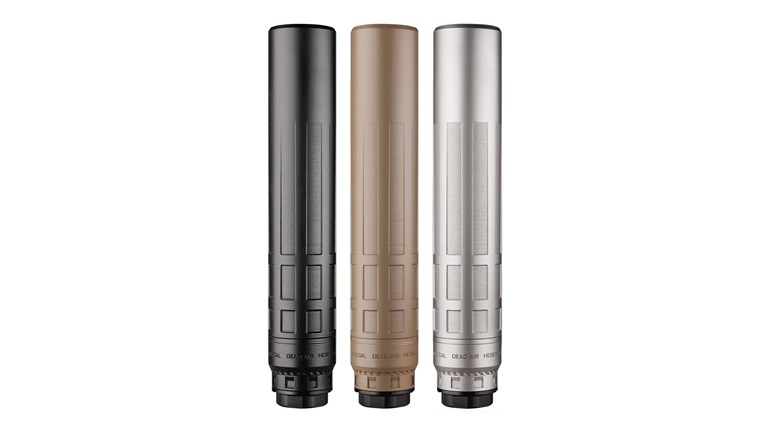
A slew of new AR-15 cartridges were launched over the last two decades as the platform gained a massive following (there’s a reason the AR-15 is the most popular rifle in the country). What’s not often considered, however, is the AR-15’s big brother, the AR-10. Originally built to fire the .308 Win., AR-10 rifles can be chambered in .308 Win. offshoots. In this two-part series, we’ll first cover the .308 based cartridges that are commercially available. In the second part, we’ll go into cartridges not produced by commercial ammo manufactures and are essentially boutique or handload-only cartridges.
Standard Commercial .308 Based Cartridges
.243 Winchester

This cartridge dates to 1955, which came on the heels of the .308 Win. when it was released in 1952. It’s a ballistic match to the 6mm Creedmoor and can shoot just as well. Granted, where this cartridge falls short is in its ability to shoot long, high-B.C. bullets like the 6mm Creedmoor. The .243 Win. is great using bullets weighing up to and including 100 grains, but performance compared to the 6mm Creedmoor starts falling off as the bullet’s weight increases past the 100-grain threshold. The .243 Win. can hold its own, as it isn’t losing several hundred fps to the 6mm Creedmoor, but when shooting a bullet like Berger’s 115 VLD bullet, 50 fps at the muzzle translates to an extra foot less of drop at 1,000 yards. But with 25 feet of drop at 1,000 yards, what’s one more foot? That’s a 4-percent difference in drop, which in statistical terms makes it significant. A 10-M.P.H. wind drift shows a difference of 2 inches (70 inches with the 6mm Creedmoor versus 72 inches with the .243 Win., a difference of less than 3 percent). With every con, there’s a pro, and if you’re a handloader, you’ll find brass far more plentiful for the .243 Win. simply from a volume perspective.
.260 Remington

About 10 or 15 years before we had the 6.5 Creedmoor craze, we had a 6.5mm cartridge that already did what the 6.5 Creedmoor did in an AR-10-size action. In 1997, Remington commercialized the .260 Remington, a .308 case necked down to shoot 6.5mm/.264 bullets. Unlike the .243 Win./6mm Creedmoor battle, the .260 not only holds its own, but it beats the .6.5 Creedmoor in some cases; the two are neck and neck, and which case design wins in the velocity department for the same bullet weight really depends on which load or reloading data being used. The real downfall of the .260 Remington compared to the 6.5 Creedmoor was another shortcoming of Remington: Much like its own 6mm Remington cartridge that fell to the .243 Win. due to twist rate, the .260 Remington cartridge utilized a slower twist rate for its barrel specs, and that primed the 6.5 Creedmoor to take over. But with the right twist rate in a custom barrel, you’ll not lose – and may even gain – something over the 6.5 Creedmoor, and have more reloading components readily available, to boot.
7mm-08 Remington

Unlike the .243 Win. and .260 Rem., this .308-based cartridge stands alone and has no equal, even though the cartridge was developed in 1980. That’s not the only thing that makes this cartridge unique. With modern powders, this specific .308 offshoot may be the best of the bunch for an all-around cartridge, as it can push 168-grain match bullets to nearly 2,800 fps with select powders, almost putting it on par with the 6.5mm/.264 diameter short-action cartridges as far as trajectory goes. But, it carries significantly more energy, all else being equal. What’s more, by handloading the 7mm-08 Rem., shooters can take what’s considered a typical match-weight bullet in the standard .308 Win. cartridge – that same 168-grain bullet –but makes use of a higher B.C. value. This means shooters get the flight path of a 6.5/.264 bullet with the energy of a .308 bullet. What’s not to like?
.338 Federal

For those looking for more of an ideal round to suppress, the .338 Federal might be your best option commercially, and even more so if you handload. Released in 2006 and designed to shoot bullet weights of 160 to 300 grains, there’s not much that will stop a .338 Federal. Heavy bullets moving at subsonic velocities – though it will take some handloading to do this – make the .338 Federal ideal for a suppressed round. And even if you’re not wanting to run a can on your gun, standard loads tend to center around the 200-grain bullets moving at around 2,700 fps, which is no laughing matter; for you history buffs reading this, you’ll note that these ballistics nearly duplicate those of the German 8X57 mm Mauser round, but you get those ballistics out of a light, modular short-action, semi-automatic rifle.
.358 Winchester
The .243 Win. wasn’t the only .308 based cartridge made in 1955. While the former cartridge was necked down drastically, Winchester went to the other extreme on neck size, too, creating the .358 Win. Sure, the sub-.30 caliber cartridges are faster, and the .338 Federal round is probably easiest to suppress based on bullet-weight options, but you won’t find a stouter commercial cartridge found in the .308 Win. family of cartridges than the .358 Win. With bullet weights starting at 180 grains and tipping the scales at 250 grains on the top end for handloading options, you likely won’t lack in the energy department, especially considering commercial ammo available from companies known for producing the hardest-hitting ammo, like Buffalo Bore’s 225-grain load trucking along at 2,700 fps. For another comparison, the .358 Win. propels bullets of equal weight about 300 fps slower than the .338 Win. Mag. from a short action and shorter barrel, and does so with more frontal surface area, making an even bigger hole. How’s that for threat stopping?
Now the big question: In what chambering will your new AR-10 upper be built?






































